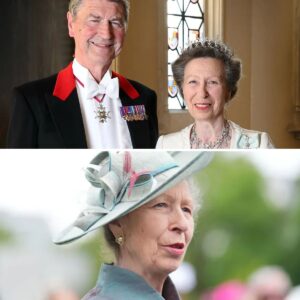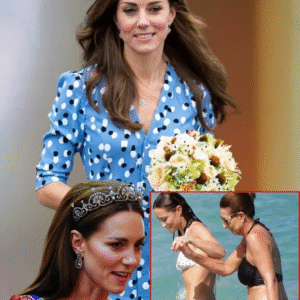
All eyes turned toward Catherine, Princess of Wales, as she stepped forward for her first solo royal engagement—an evening that would not only test her poise under the spotlight but also affirm her growing stature within the monarchy. The setting was the gilded reception rooms of Clarence House, where the Princess was standing in for the Prince of Wales at a high-profile charity reception in aid of InKind Direct, an organization devoted to redistributing surplus goods to communities in need.
Arriving with her trademark quiet confidence, Catherine moved through the grand entrance hall lined with floral arrangements in soft creams and greens, pausing to greet staff and charity representatives. There was no mistaking the blend of warmth and professionalism she brought to the room. For guests, the evening was about the cause; for royal watchers, it was about witnessing the Princess in her element—commanding attention without ever overshadowing the occasion.
And then there was the gown. In a move that set fashion circles buzzing, Catherine chose a vintage Amanda Wakeley creation in a serene aqua tone. The Grecian-inspired design flowed in soft pleats from an empire waistline, the fabric catching the light with every step. Silver embellishments traced delicate crisscross straps, framing her shoulders like fine jewelry, and continued in subtle edging along the bodice. Under the reception chandeliers, the gown shimmered in a way that felt both ethereal and deliberate—a perfect midpoint between regal glamour and understated grace.
Her accessories were equally considered: a silver clutch with a mirrored finish, diamond earrings that caught the light without competing with the gown’s sparkle, and a slim bracelet from her personal collection. Her hair, swept into a soft updo, revealed the neckline and allowed the gown’s romantic drape to fall naturally. It was, as royal style commentator Elaine Parker later put it, “a masterclass in modern eveningwear—regal but relatable, and destined to be remembered.”
Within minutes of the first photographs hitting social media, the comments poured in. Admirers declared it “one of her best looks ever,” praising not only the gown but the way she seemed to wear it with an ease that invited conversation rather than spectacle.
Fashion historians were quick to place the look within the ongoing arc of Catherine’s style evolution—a tradition that blends timeless silhouettes, soft color palettes, and precise detailing. They noted its kinship to her blush pink Alexander McQueen gown worn to the 2017 BAFTAs, with its Old Hollywood drape and romantic tailoring, and to the more dramatic pale gold Jenny Packham gown she wore to the 2021 No Time to Die premiere, whose sweeping cape and intricate beadwork were a deliberate red carpet statement. By comparison, the Amanda Wakeley gown’s softer glow was finely tuned for a charitable evening—elevated, yet approachable.
Even her earlier ivory lace Alexander McQueen dress for the 2011 Garter Day parade fits this stylistic lineage: formal enough for the occasion, but imbued with a lightness that photographs beautifully. Across these appearances, Catherine demonstrates an instinctive grasp of context—calibrating the “princess effect” to suit the tone, the venue, and the purpose.
As the evening at Clarence House drew to a close, guests departed into the cool London night, still speaking of her poise. One attendee, smiling as they stepped into a waiting car, remarked, “She’s every inch the future queen, and she knows exactly how to dress the part.” Outside, onlookers echoed the sentiment. One fan summed it up simply: “Elegant, confident, and utterly radiant.”
The Amanda Wakeley gown was more than just a beautiful dress. It was a carefully chosen emblem—of heritage, of British design excellence, and of a Princess whose influence is growing not in loud gestures, but in the quiet, steady way she commands a room.





